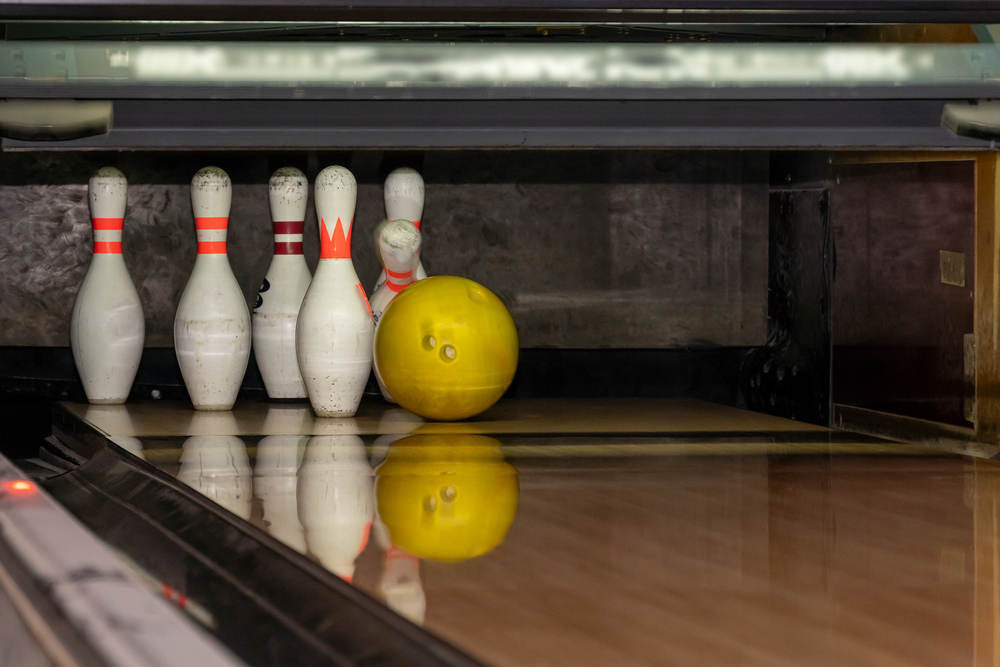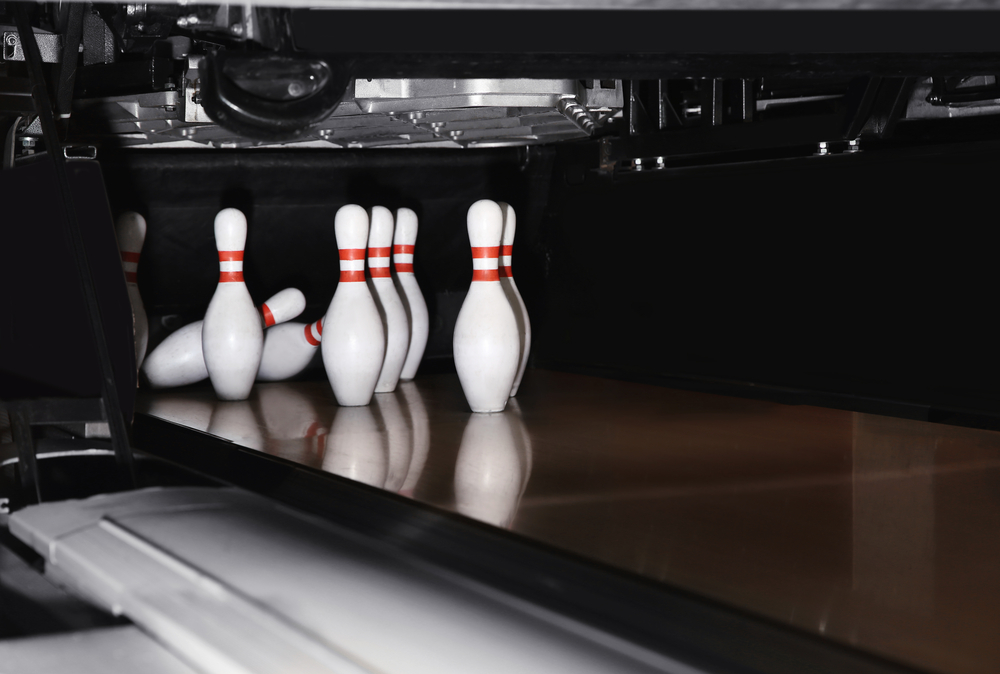
If you're new to bowling, you may have been confused when you first heard about spares. Spares are extremely important to the game, so you need to know everything there is to know about them.
So, what is a spare in bowling? Are spares better than strikes?
In this article, we’ll not only teach you what spares are, but we’ll share specific tips to increase your chances of picking them up.
Read on for all the information you need!
Contents
- 1 What Is a Spare in Bowling?
- 2 Why Try for a Spare?
- 3 How to Bowl a Spare
- 4 Things Keeping You From Picking up Spares
- 5 Are Spares Harder to Get Than Strikes?
- 6 Bowling Spare Names
- 7 What’s the Hardest Spare in Bowling?
- 8 Can You Get a Spare with a Split
- 9 The Most Common Spares That Frustrate Bowlers
- 10 Be Easy on Yourself While Learning the Ropes
What Is a Spare in Bowling?
A spare is when you knock down all ten bowling pins within two tries. This can happen in one of two ways: hitting the pins directly or knocking them over when your ball rebounds from the gutters.
When you get a spare, it counts as ten points plus any additional pins you may knock down during only the first ball of your next roll. Typically, you don't have to keep up with a score sheet, it's automatically captured by the bowling alley's computer system.
Why Try for a Spare?
While it may not seem like it initially, picking up a spare can be easier than trying to get a strike. This is because you have two chances to knock down all the pins, so even if you don't hit all the pins on your first roll, you can still pick up the spare on your second.
Still, it’s best when you get a strike. It earns you ten points plus the number of pins you knock down over your next two rolls. However, trying for a spare, the maximum score you will get is twenty.
What happens if you bowl a spare in the tenth frame? Remember, in the tenth frame, you have 2 available rolls + a possible bonus roll. If you bowl a spare in on your first roll and leave pins (open frame) on your second roll, the game ends.
But if you roll a spare on the first two rolls in the tenth frame, you get the bonus roll!

How to Bowl a Spare
Now that we've gone over what a spare is and why you should try for one, it's time to learn how to actually bowl one. Here are some tips:
- Take a look at the pins and decide which one you're going to aim for. This is called the "target pin." Shift your stance to the left or right, depending on the pin(s) you intend to knock down.
- Use a ball that rolls straight versus a ball with lots of hooking potential. For most spares, you want to be able to roll the ball straight down the lane and knock down those remaining pins.
- Be sure to roll your ball with sufficient force so it won’t change directions on its trip down the lane.
- Ensure that you've got good bowling shoes to protect your feet and give you the best possible grip on the lane.
Note: This will not work for all spare situations but can make it easier to pick up the spare in some cases.
Also, remember that many factors such as the weight of your ball, the type of lane you're bowling on, how the lane is maintained, and your own personal bowling style all affect how you bowl.
Things Keeping You From Picking up Spares
Having trouble picking up spares? It's time to talk about some things that might be hindering your success. Here they are:
- One of the most significant issues is not aiming for the correct pin. When you don't aim for the right pin, you could miss the pins entirely or end up with a gutter ball.
- Another big issue is not using the right ball. If you use a ball that's too light, it may simply bounce off the pins. Conversely, if you use a ball that's too heavy, it may be difficult to control, leading to a gutter ball.
- Not following through properly can also lead to your ball veering off course and into the gutter. Make sure you're following through in the direction of the target pin to ensure that your ball stays on course.
With these tips in mind, you should be able to start picking up more spares. Practice makes perfect, so don't get discouraged if you don't see results immediately. Keep at it; pretty soon, you'll be much more capable.

Are Spares Harder to Get Than Strikes?
Some will find it harder to get strikes than spares, and vice versa. However, through logical deduction, one might conclude that spares are harder to get than strikes.
This is because you might be aiming for very few pins on your second roll - sometimes just one. Knocking down just a few pins requires good aim, which most just don’t have.
Whether you think it's easier or harder to get a spare, the fact remains that strikes are worth more points.
So, if you're trying to improve your bowling game, focus on getting more strikes. But don't forget about those spares - they can come in handy when you need them most.
Bowling Spare Names
Just like getting get consecutive spares, can be an effective strategy to remain competitive in bowling. It still requires a level of consistent performance on your part. But did you know that getting spares in a row has a name?
- 1 spare- getting the first spare is simply called a spare
- 2 spare- back-to-back
- 3 spare- spare turkey
- 4 spare- 4 bagger spare happens when a bowler makes 4 consecutive spares in 4 different frames.
- 5 spare- 5 bagger spare happens when a bowler makes 5 consecutive spares.
- 6 spare-6 bagger spare happens when a bowler makes 6 consecutive spares in 6 different frames.
- 7 spare-7 bagger spare happens when a bowler makes 7 consecutive spares.
- 8 spare-8 bagger spare happens when a bowler makes 8 consecutive spares in 8 different frames. This takes a high level of concentration and focus.
- 9 spare-9 bagger spare happens when a bowler makes 9 consecutive spares. This is a rare occurrence.
- 10 spare- Dutch 200
What’s the Hardest Spare in Bowling?
The answers may vary considerably if you ask several seasoned bowlers which spare is the hardest to pull off. But across the board, die-hard bowlers know that there are tough spares.
They’re avoided at all costs but still happen to even the most skilled bowlers. Achieving the hardest spares comes down to skill and—some may argue—dumb luck.

Can You Get a Spare with a Split
A split is one of the most challenging circumstances a bowler may find themselves in. A split occurs when a bowler knocks down pins in such a way that a space between two other pins is created.
The most ordinary split is when all of the pins are down except the seven and ten. The bowler faces an exceptionally difficult scenario because these two pins are the furthest apart. Because the ball can’t hit both pins at the same time, this is the case.
However, a spare (the clearing or clean up of a split) can still be obtained via a split. It’s just really challenging. The bowler’s ability to get a spare from a split is based on his or her experience, skill level, and luck.
The bowler may be able to knock a pin so that it ricochets to the opposite side and strikes the other pin. It’s also possible that the bowler causes the ball to roll and knock down the other pin.
Even if the bowler succeeds, gaining a spare (the clean up) from a split is difficult. A bowler may come across several frustrating types of splits to spare that are humbling to the most season bowler.

The Most Common Spares That Frustrate Bowlers
- The 7-10 Split (also known as bedposts): The ten pins are arranged in a triangle shape at the end of the lane. On the first shot, the bowler knocks down all pins except the ones at the far back in opposite corners. To pull off a spare, the bowler has to clip one pin and send it across to the other side of the lane to knock the other pin down. This is known to be the most challenging spare to pick up, and it takes enormous skill to make it happen.
- The Big Four (also known as 4-6-7-10): Bowling pins are arranged with the tip of the triangle pointed toward the bowlers, with the number 1 pin at the tip. The order of numbers flows from left to right until the number 10 in the back right corner. With the Big Four split, pins 4, 6, 7, and 10 are left standing after the first roll. Pro bowlers know that more pins don’t mean greater success for a spare with this split, making this one of the more dreaded situations in a bowling game.
- The Greek Church: According to the Professional Bowlers Association, the Greek Church is a 4-6-7-9-10 split after the first roll in a frame. The name of this split came from the way the remaining pins remind bowlers of a cathedral church. Another type of Greek Church is when the first shot leaves three pins on one side and three on the other.
The more someone bowls, the more they learn about the pitfalls they’ll want to avoid from both seasoned bowlers and personal experience.
While the above may be the most recognized tough spares, the hardest situations can vary from bowler to bowler. This is because each bowler has their own strengths, weaknesses, and preferences.
Be Easy on Yourself While Learning the Ropes
Whether you’re just starting out or you’ve been bowling for a while, remember to give yourself a break. Have fun with it and take your losses in stride - they happen to everyone.
Spares and strikes will come with time and practice.
With more experience, you'll be able to better anticipate which shots will result in spares and which ones won't. So, relax and enjoy yourself while you work on perfecting your bowling game. Who knows, you might just end up being a pro!
Related Articles
Ready to try for a spare? Head to your local bowling alley and give it a shot! And if you're still unclear about anything, don't hesitate to ask one of the employees - they'll be more than happy to help.
And don't forget to keep researching and learning about the sport. The more you know, the better you'll bowl!
Kira Byrd, a Certified Fraud Examiner, holds a B.S. in Accounting from the University of Alabama at Birmingham. With a passion for bowling from her childhood, Kira has poured her expertise and personal experiences into creating and nurturing Bowling For Beginners. Kira's mission is to meet new bowlers where they are and guide them toward consistently achieving higher scores. With a focus on skill development and strategic techniques, she empowers readers to take control of their game and unlock their true potential.
Bowling For Beginners embodies strict editorial integrity, ensuring reliable and unbiased information. Kira's commitment to delivering valuable insights and practical strategies is reflected in every article. Here's an explanation of our editorial policy and how we get money.





